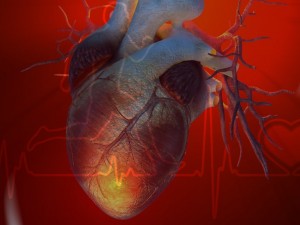Important of Exercises for Cardio Rehabilitation

Benefits of Physical Exercises for some Chronic Pain
February 2, 2017A heart attack is the most Prevalent and serious of all cardiovascular diseases. A heart attack occurs when a coronary artery is blocked. A clot or Thrombus is the most common cause, reducing or cutting off blood flow and oxygen to the heart muscle. If the coronary artery that is blocked supplies a major portion of the heart muscle, death will occur within minutes. Occlusions of lesser arteries may result in angina pectoris or nonfatal heart attack.
Regular Physical activity reduces the risk of heart attack (coronary occlusion)
People who perform regular sports and physical activity have half the risk of a first heart attack compared to those who are sedentary. Possible reasons are less atherosclerosis, greater diameter of arteries, and less chance of a clot forming.
 There is evidence that regular exercise can improve coronary circulation and thus reduce the chances of a heart attack or dying from one.
There is evidence that regular exercise can improve coronary circulation and thus reduce the chances of a heart attack or dying from one.
Within the heart, there are many tiny branches extending from the major coronary arteries. All of these vessels supply blood to the heart muscle. Healthy arteries can supply blood to any region of the heart as it is needed. Active people are likely to have greater blood-carrying capacity in these vessels, probably because the vessels are larger and more elastic. Also, the active person may have a more profuse distribution of arteries within the heart muscle, which results in greater blood flow. A few studies show that physical activity may promote the growth of “extra” blood vessels, which are thought to open up to provide the heart muscle with the necessary blood and oxygen when the oxygen supply is diminished, as in a heart attack. Blood flow from extra blood vessels is referred to as coronary collateral circulation.
Coronary collateral circulation
Improved coronary circulation may provide protection against a heart attack because a larger artery would require more atherosclerosis to occlude it. In addition, the development of collateral blood vessels supplying the heart may diminish the effect of the heart attack if one does occur. These extra (or collateral) blood vessels may take over the function of regular blood vessels during a heart attack.
The heart is rendered inefficient by one or more of the following circumstance: high heart rate, high blood pressure, and excessive stimulation. All of these conditions require the heart to use more oxygen than is normal and decrease its ability to adapt to stressful situations.
The inefficient heart is one that beats rapidly because it is dominated by the sympathetic nervous system, which speeds up the heart rate. Thus, the heart continuously beats rapidly, even at rest, and never has a true rest period. A study of one college basketball coach who was under considerable stress indicated that his lowest resting heart rest during the day was 88bpm. High blood pressure also makes the heart work harder and contributes to its inefficiency.
Research indicates five things concerning physical activity and the inefficient heart.
Regular activity leads to the dominance of the parasympathetic nervous system rather than to sympathetic dominance; thus the heart rate is reduced and the heart works efficiently. Regular activity helps the heart rate return to normal faster after emotional stress.
Regular activity strengthens the heart muscle, making it better able to weather an emotional storm.
Regular activity decreases sympathetic dominance and its associated hormonal effects on the heart, thus lessening the chances of altered heart contractility and the likelihood of the circulatory problems that accompany this state.
Regular activity reduces the risk of sudden death from ventricular fibrillation (arrhythmic heartbeat).
Not only does regular physical activity seem to reduce the risk of developing coronary heart disease, there is also evidence that those who already have the condition may reduce the symptoms of the disease through regular exercise. For people who have had the heart attack, regular and progressive exercise can be an effective prescription when carried out under the supervision of a physician. Remember, however, that exercise is not the treatment of preference for all heart attack victims. In some cases, it may be contraindicated so visit your health care provider or physiotherapist for exercises prescription.



